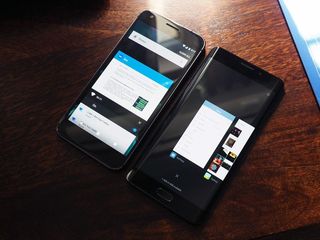MIUI is never going to be close to stock Android, and that's a good thing

With over 200 million users, Xiaomi's MIUI is one of the most popular manufacturer skins in the world. Its usage has skyrocketed in recent years as Xiaomi made its foray into the Indian market, where the company has set up an R&D unit to cater to localization needs.
MIUI has come a long way in the last three years, adding a host of new features that augment the core experience. Xiaomi's frenetic pace of development — with a new update rolling out bi-weekly — means that MIUI is always evolving, even if updates don't include any user-facing changes. As a consequence, the user interface has become bloated, and the sheer number of features means that Xiaomi isn't as agile as it used to be when it comes to delivering platform updates.
Too big for its own good

Making sure its UI works on a new version of Android and ensuring compatibility with all the models in its portfolio takes significant engineering resources. Six months after the introduction of Android 7.0 Nougat, the Mi 5 is the only phone to have picked up the update. Then there's the way MIUI looks. Although we've seen the addition of several new features in MIUI, the core user interface itself hasn't changed all that much over the years. For instance, the multitasking pane still looks like something designed for the KitKat era.
That said, Xiaomi does a great job of delivering the latest MIUI updates to a majority of its phones. MIUI 8 is the latest iteration of Xiaomi's skin, offering an interface with a few visual tweaks, an abundance of solid colors, and a ton of new features. Xiaomi rolled out the update to devices as far back as the Mi 2, which made its debut in 2012.
With so many features baked into MIUI, Xiaomi isn't quick at platform updates anymore.
In this regard, Xiaomi is like Apple. Although its devices aren't on the latest version of Android, with its UI offering its own security-focused features, Xiaomi's priority is to deliver MIUI updates to its range of devices in a timely manner.
My 2014 Mi Pad is still on Android 4.4.4 KitKat, but it has picked up the MIUI 8 update late last year, giving me access to all the new features that Xiaomi has to offer. The three-year old tablet has the same functionality as the more recent Mi 5, which is now running Nougat. There's a reason MIUI updates work this way, and it has to do with Xiaomi's home market.
Be an expert in 5 minutes
Get the latest news from Android Central, your trusted companion in the world of Android
Giving users what they need
MIUI is used globally, but Xiaomi's main market is China, and as such the user interface is designed with Chinese users in mind. The customizations and added security features — the ability to block individual apps from running in the background, preventing apps from automatically starting at boot — are all borne out of a market where malware is rampant and apps are distributed not through a unified storefront like the Play Store but through multiple app stores.
MIUI is designed for China, a country where malware is rampant.
With no single entity like Google acting as a gatekeeper to weed out malware and other malicious content, the onus is on handset makers like Xiaomi to build in safeguards to ensure that their customers don't fall prey to such apps.
That'll continue to be the case for some time now, and while I'd love to see MIUI's features available on a pure Android interface, that isn't a priority for Xiaomi. Its goal is to ensure that its users aren't falling victim to unruly apps, and in that context, MIUI is doing a great job.

Harish Jonnalagadda is a Senior Editor overseeing Asia at Android Central. He leads the site's coverage of Chinese phone brands, contributing to reviews, features, and buying guides. He also writes about storage servers, audio products, and the semiconductor industry. Contact him on Twitter at @chunkynerd.
